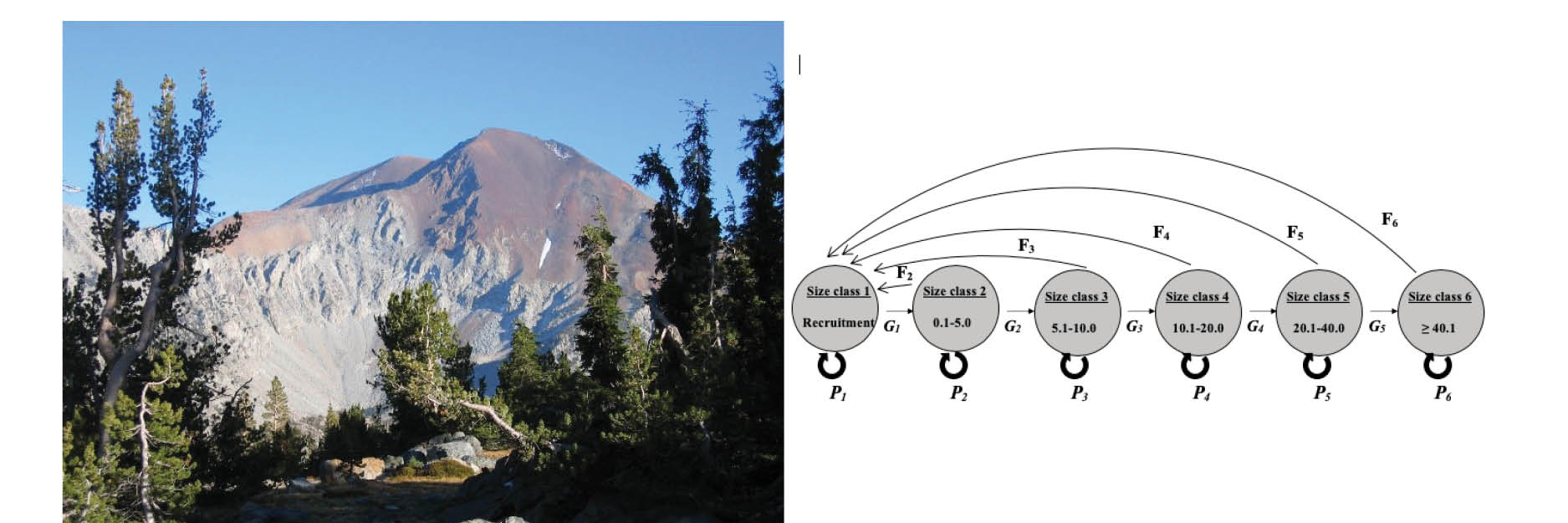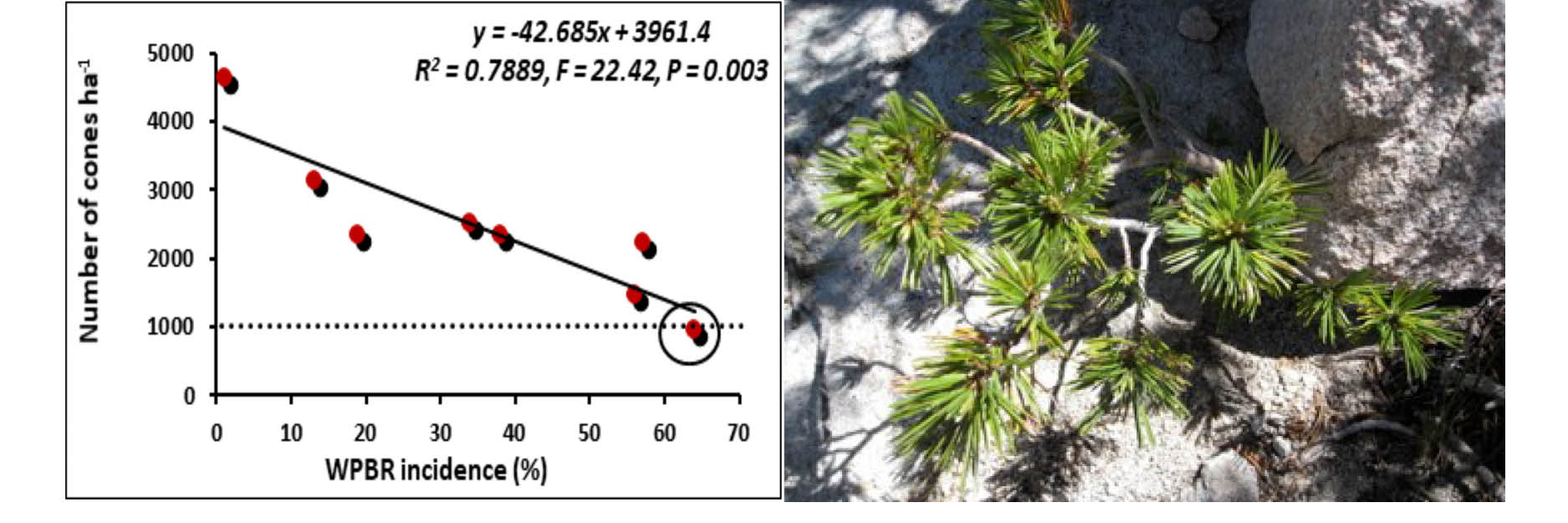

Obtaining long-term demographic data for forest tree species is vital to accurately access and describe population dynamics, both currently and in the future. Knowledge of the basic population biology (ecology and genetics), demographics (e.g., vital rates: survival, growth, and fecundity), and environmental influences are important in understanding how threats such as the introduced pathogen Cronartium ribicola (cause of white pine blister rust), climate-driven outbreaks of mountain pine beetle, climate change, and other anthropogenic disturbances might influence current and future forest tree populations. Population studies serves as a foundation for monitoring as well as providing resource managers with a sufficient understanding of forest tree species status, trends, and vulnerabilities.
